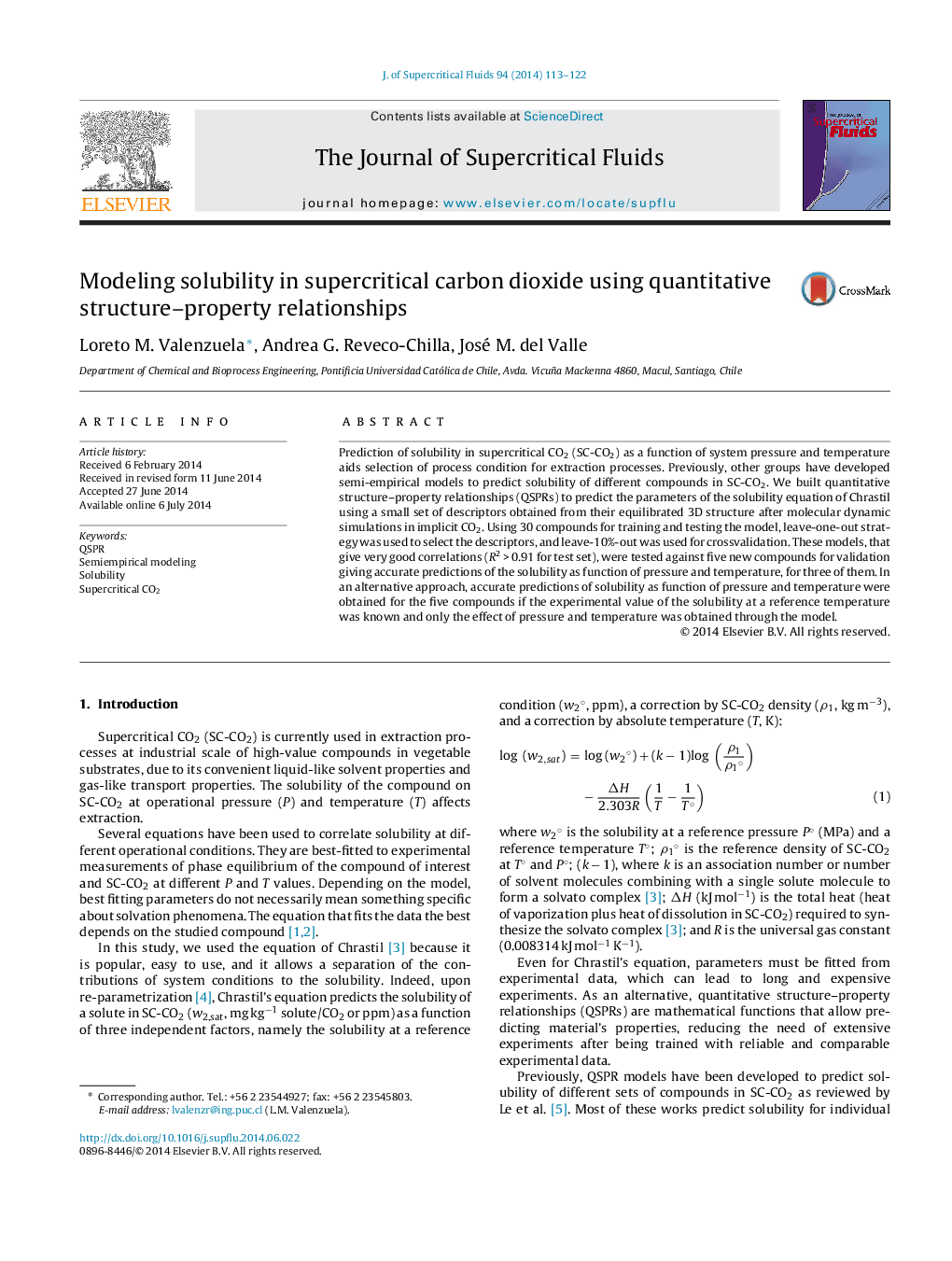| Article ID | Journal | Published Year | Pages | File Type |
|---|---|---|---|---|
| 230386 | The Journal of Supercritical Fluids | 2014 | 10 Pages |
•We built accurate QSPR models for the solubility in SC-CO2 of 30 compounds.•Solubility was modeled by the three parameters of the Chrastil equation.•The effect of density and temperature was accurately predicted for a validation set.•The solubility at a reference condition is needed to predict it for other conditions.•Using compound's 3D structures, their solubility in SC-CO2 is accurately predicted.
Prediction of solubility in supercritical CO2 (SC-CO2) as a function of system pressure and temperature aids selection of process condition for extraction processes. Previously, other groups have developed semi-empirical models to predict solubility of different compounds in SC-CO2. We built quantitative structure–property relationships (QSPRs) to predict the parameters of the solubility equation of Chrastil using a small set of descriptors obtained from their equilibrated 3D structure after molecular dynamic simulations in implicit CO2. Using 30 compounds for training and testing the model, leave-one-out strategy was used to select the descriptors, and leave-10%-out was used for crossvalidation. These models, that give very good correlations (R2 > 0.91 for test set), were tested against five new compounds for validation giving accurate predictions of the solubility as function of pressure and temperature, for three of them. In an alternative approach, accurate predictions of solubility as function of pressure and temperature were obtained for the five compounds if the experimental value of the solubility at a reference temperature was known and only the effect of pressure and temperature was obtained through the model.
Graphical abstractSolubility of 1-hydroxy-2-(propoxymethyl)anthraquinone in supercritical CO2 at 34.9–74.9 °C and 12.2–35.5 MPa.Figure optionsDownload full-size imageDownload as PowerPoint slide
